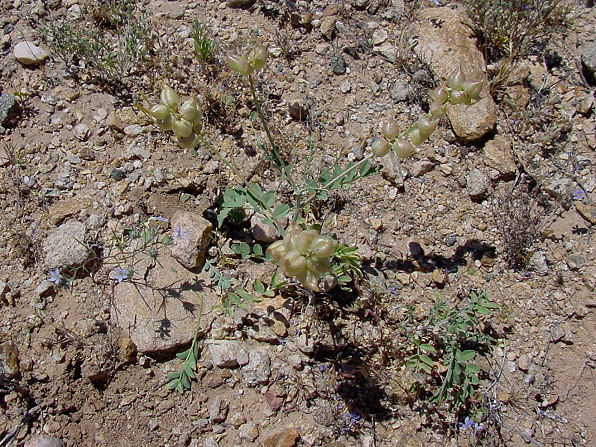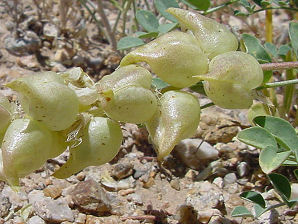Arizona Wild Flowers
Pictures, Photos, Images
Descriptions, Information, Reviews.
Astragalus, Astragalus praelongus.
We Are Proud Of Our SafeSurf Rating!
Click On Any Of The Following Links By Amazon.Com
For Books, & Videos About Wildflowers Of Arizona & The Southwest USA. No Obligation!
 |
| Astragalus, Astragalus praelongus. Photo May 16, 2005. Hillside, Arizona. |
|---|
 |  |
| Astragalus Astragalus praelongus. | Astragalus Astragalus praelongus. |
|---|
Astragalus.
We wish to thank Wikipedia, the free encyclopedia for some of the information on this page. We share images and information with Wikipedia. The Astragalus genus is very large and complex. World-wide there are about 1600 species. Hundreds of thes species are in the Western United States. There are over 100 species in Arizona. They are considered very hard to identify. In Arizona, we are often considered to be very lucky just to identify them as an Astragalus. It is the seed pod, not the flower, that is often crucial in the identification process. Poisonous species of Astragalus are known as locoweeds. Others are known as Milkvetch. Astragalus praelongus is a stout, erect perennial.
Quick Notes:
Height: Up To 48" Tall. Most are about 12 inches to 24 inches.
Flowers: Cream Colored, pealike, drooping to 7/8 inch long, in raceme to 3 inches long. They are followed by a white, inflated pod about 1/2 inch wide and 1 1/2 inch long.
Flowering Time: May - August.
Seeds: Seedpods 1 1/2 - 3" long, 3/8 - 1/2" in diameter; a cylindrical pod; short-pointed at ends, dark brown or black, hard; maturing in summer, remaining attached, often opening late; many elliptical flattened shiny brown; seeds.
Leaves: Gray-green to 6 inches long with 11 - 27 elliptical leaflets each about 3/4 inch long and slightly curved upward.
Found: Native to the USA (AZ, CO, NM, NV, UT); and northern Sonora, & Baja California, in Mexico.
Hardiness:
Soil pH requirements:
Sun Exposure:
Elevation: 2,800 - 6,500 Feet.
Habitat: Found in selenium-rich clays, silts, and sandy soil of plains and desert.
Miscellaneous: Flowering Photos Taken May 16, 2005 near Hillside, Arizona.
|
We Are Proud Of Our SafeSurf Rating!
Click On Any Of The Following Links By Amazon.Com
For Books, & Videos About Wildflowers Of Arizona & The Southwest USA. No Obligation!
| © 1966 - Present, Audrey, Eve, & George DeLange |
